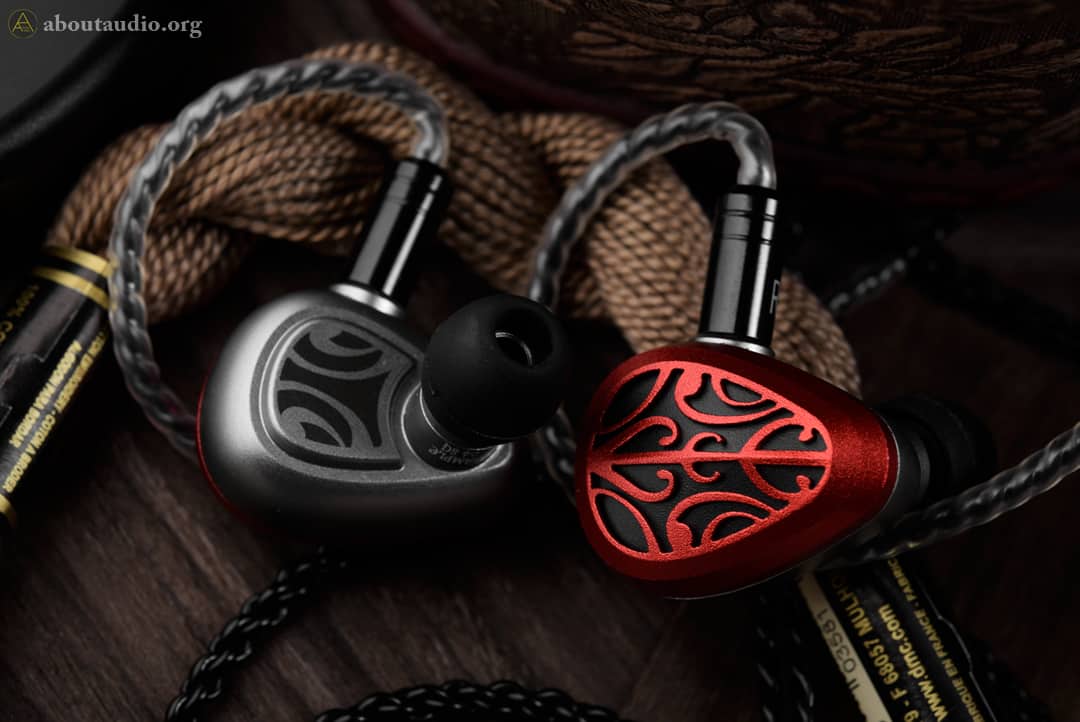 MMR Gae Bolg Review: A Rational Piercer
MMR Gae Bolg Review: A Rational Piercer
If anybody asks what was the hottest new brand in 2020, I would say pick Metal Magic Research (MMR). Founded by the head of Jomo Audio, MMR is a Singaporean IEM brand that has been presenting unprecedentedly unique products along with their new cable brand, Eletech. MMR’s first two releases, Homunculus and Thummim, were just enough to gain a significant amount of interest throughout multiple countries. I was also able to have a quick audition for these two special IEMs, I could tell their sounds being as gorgeous as much as their form factor.
One thing to note, however, is that MMR is a brand that mainly focuses on high-end premium products. Homunculus and Thummim are each priced at $1699 and $4499, which are no easy pricing for many audiophiles to invest in. However, now we have quite good news. MMR announced a new model just recently that is meant to lower the price barrier for us to experience the “metal magic” these IEMs ooze out – presenting MMR Gae Bolg. Gae Bolg is by far the most affordable option available from MMR with a price tag of $1199. Okay, $1199 sure may not sound so affordable, but such a price is no longer a surprise in the IEM market. Alongside, what really matters is how would this new IEM sound and see if this one has a justifiable performance for its price. It is now time for us to take a deeper look into Gae Bolg.
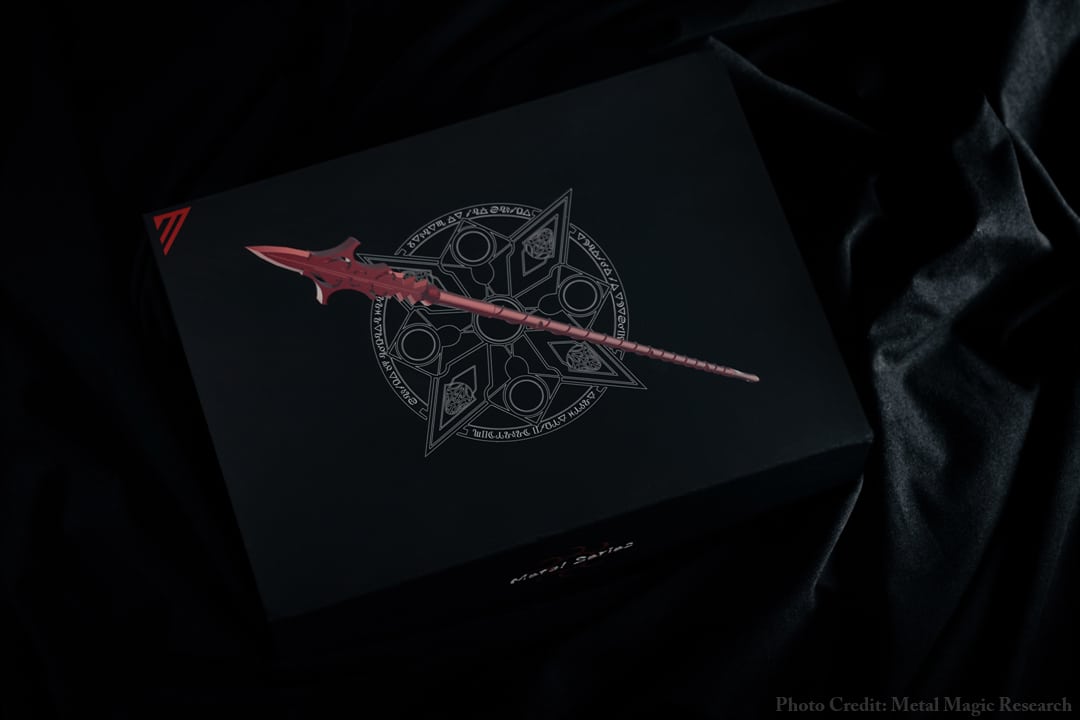
 Packaging
Packaging
Just as their previous IEMs were done, the packaging of Gae Bolg has creative and mysterious artworks that make the unboxing experience enjoyable. The box is wider and thinner compared to the previous products with a black-red color them going on throughout the unboxing. Lining up with the theme of its naming, An artwork of the Gae Bolg spear is presented at the center of the outer lid. Other than the earpieces, the packaging includes a stock cable, 3 pairs of Acoustune AET07 eartips (S/M/L), a portable case, a cleaning tool, a carabiner, and a metal emblem card with a cut-out of the Gae Bolg logo. The carrying case has a red theme with a similar form factor with the one included in Homunculus. Although I do not have the case in my hands, they are made out of genuine cowhide and has a great build quality based on my experience with MMR’s other leather cases.
 Earpieces – The Form Factors
Earpieces – The Form Factors
Gae Bolg’s design is simply stunning. The looks on them would already explain for themselves. With a rounded teardrop shape, the earpieces use a fully-machined CNC aluminum. The faceplates have a deep red color with complicated yet beautiful Viking patterns. The inner side behind the red Viking cut-outs has a matte black finish, making Gae Bolg’s faceplate design stand out even stronger. Thus, the visible metal grains from the red faceplate completes its gorgeous form factor.
The other side of the earpiece also has a similar but simpler patterning, preventing this inner side from appearing too plain. The nozzles are long enough to compensate for their rather large earpieces and the overall fit is quite comfortable. It is still a large size for those with smaller ears, though most users would not have a problem fitting these into the ears as the ergonomics are further advanced from Homunculus or Thummim.
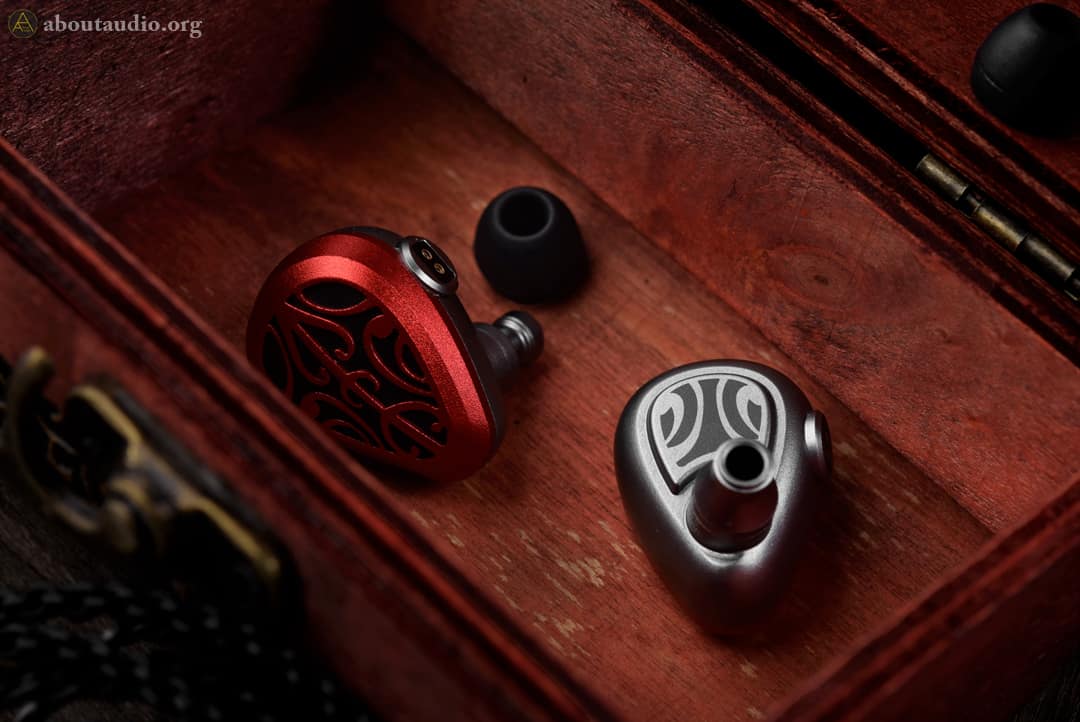 Earpieces – The Specs and Gae Bolg Structures
Earpieces – The Specs and Gae Bolg Structures
Gae Bolg consists of 5 Balanced Armature drivers and involved with dedicated internal structures. First, Gae Bolg incorporates vented BA drivers as a number of other manufacturers have been doing – but on the lows, instead. Very interesting to find this because manufacturers usually apply ventings on the BA drivers that take charge of the upper-ends. Anyhow, Gae Bolg’s driver setup is comprised of 2 vented lows, 1 mids, 1 vented mid-highs, and 1 tweeter. These drivers are infused all in one using a 4-Way passive EFD (Electro Frequency Division), efficiently handling the division of the sonic bands. Each driver is coupled with specific filters correspondingly to created the needed sound signature.
On top of that, MMR loaded Gae Bolg with a dedicated chamber named GBAC (GaeBolg’s exclusive Acoustics Chamber) that finalizes the acoustic formation for these drivers. This is also similar to Campfire Audio’s Solid-Body structure, but the execution from MMR was done more daringly. Gae Bolg uses a wider and longer chamber where it even has spiral-like waveguides within its inner structure. GBAC serves to correct the phasing differences between the BA drivers, yet done in a more natural manner Such phase-correcting method creates a sound that is significantly more organic than some old IEMs where the phases were corrected simply by cutting tubes in different lengths. Last but not least, Gae Bolg uses a TriBore Waveguide at the section of the inner chamber, allowing these multiple sound production to stay cleanly divided until they reach the tip of the nozzle.
 Cable
Cable
Now, there is one exclusive option for Gae Bolg and it is that you could choose the cable option. The $1199 deal is called a Light packaging that includes a standard 2pin-3.5mm cable. Once you add $200 (therefore $1399) with your purchase, you could upgrade to a Complete packaging that includes Eletech Prudence SPC cable with a choice of cable termination (2.5mm/3.5mm/4.4mm). For your interest, Eletech Prudence is a premium cable that is also included with Homunculus. The regular stock cable from Gae Bolg is nothing unfamiliar to us – a light, smooth 4-braided cable with a black sleeving. While Eletech Prudence is recommended to bring out the full potential of Gae Bolg, the regular cable still does a very fine job of setting up a place for Gae Bolg to make its dance.
 Sound impression – Lows
Sound impression – Lows
MMR created Gae Bolg as a full-BA IEM, though that never means Gae Bolg should have weak bass. Lows produce thick, masculine growlings with prominent texture details. The sound rays are meaty and thick in color, thoroughly filling up the lower ground of the headroom with vibrant yet controlled bass presence. The bass quantity weighs similar as slightly v-shaped (v instead of V) but with a low-end presence that is bold as any other bass-heavy IEMs. Clarifying the overall sound signature from the getgo, Gae Bolg shows a slightly w-shaped sound signature. Now continuing with the bass, the strikes are smooth in the exterior yet hard and dense in the interior. Such type of strikes allows a smooth listening experience while preserving the firmness and tightness of the bass.
Density-wise, Gae Bolg shows quite a meaty and tightened bass production – though what is interesting is that the low-end atmosphere does not get stuffy or feel to be getting “chocking” the upper-end. This is one of Gae Bolg’s characteristics where it forms a vast and mildly openly bass. Such bass involves high density that unfolds evenly throughout the bass region, preventing the bass region from sounding like one large lump. Speaking of the bass region, I would like to point out another interesting element from Gae Bolg’s low-end. First, the lows are well pulled down to the lower side of the staging that brings stability and weight. Second, while the lows are well lowered and calmed, both ends of the bass regions (L/R) continues to extend fuller and higher, forming a mild blooming. I found this to be a good way to keep the cleanliness of the bass while adding fullness.
Ultra lows are impressive for a full-BA setup. It possesses a deep, dark, and profound ambiance that makes stable dives. It also shows quite a bold presence in the music. The bass overall shows a gently warm temperature, yet its stuffiness-free atmosphere serves a bit as a refresher. To sum up, this high-quality bass forms a vast and large headroom while preventing them from losing density or tightness. This differs from those that have heavy and large bass but with tons of reverbs going on. If comparing a loose bass to a situation of forcing a thick chunk of bass into a wider region, Gae Bolg’s low-end feels to be large to its nature that is accompanied with a good thickness. So lows are fully backing up the upper-end without easily bleeding into the lower mids. I would call that an “organized smoothness”.
 Sound impression – Mids
Sound impression – Mids
If I have to summarize how Gae Bolg sounds in the mids, I would state it as a “vigorous refinement”. The tonality is much natural with an extremely steady presentation. Vocals flow with even emphases throughout the mid-range including the sibilance area. Perhaps Gae Bolg is one of the finest stability among IEMs I have tried until now. Technically, this was possible thanks to MMR’s new GBAC chamber, a central system that corrects the phasing. Perceivably, it comes to be possible due to a particular characteristic of Gae Bolg’s headroom – to have the center region of the bass lowered/leveled while each end of the bass region begins blooming. Perceivably, mids sit right on top and at the center of this bass region. As result, mid-layers are cleanly yet naturally sorted from the lows, forming a beautiful harmony between the two bands.
If you have experienced MMR/Eletech products, you may have noticed that these products pay attention to delivering fine grains or textures. There is no exception for Gae Bolg either. Gae Bolg most definitely does not have that water-soaked dullness nor dry and crumbly texture. It hits a sweet spot of containing moderate moisture to the sound while being quite blatant in revealing the textures with good crispness. On top of that, mids show highly stabled phasing and emphases, heading towards a reference-like sound signature that has plenty of musicality. Vocals are only mildly thicker from neutral, which is still very neutral. Instead, it adds body and fullness to the vocals. Plus, mids also show an appropriate amount of 3D spetialness, which makes vocals sound even lively.
Both male and female vocals work just as nice with Gae Bolg. Since this IEM shows rather consistent yet noticeable changes depending on different eartips, it has a good nature that is easy to play around with tip-rolling. Just like the lows did, mids also show a mild openness to its atmosphere – but now topped with a mild airiness. Sibilances are barely present throughout many tracks and genres – though if they do, they get nowhere near feeling piercing or fatiguing. They rather behave calmly and with a small volume, ending up to be adding extra crispiness to the music.
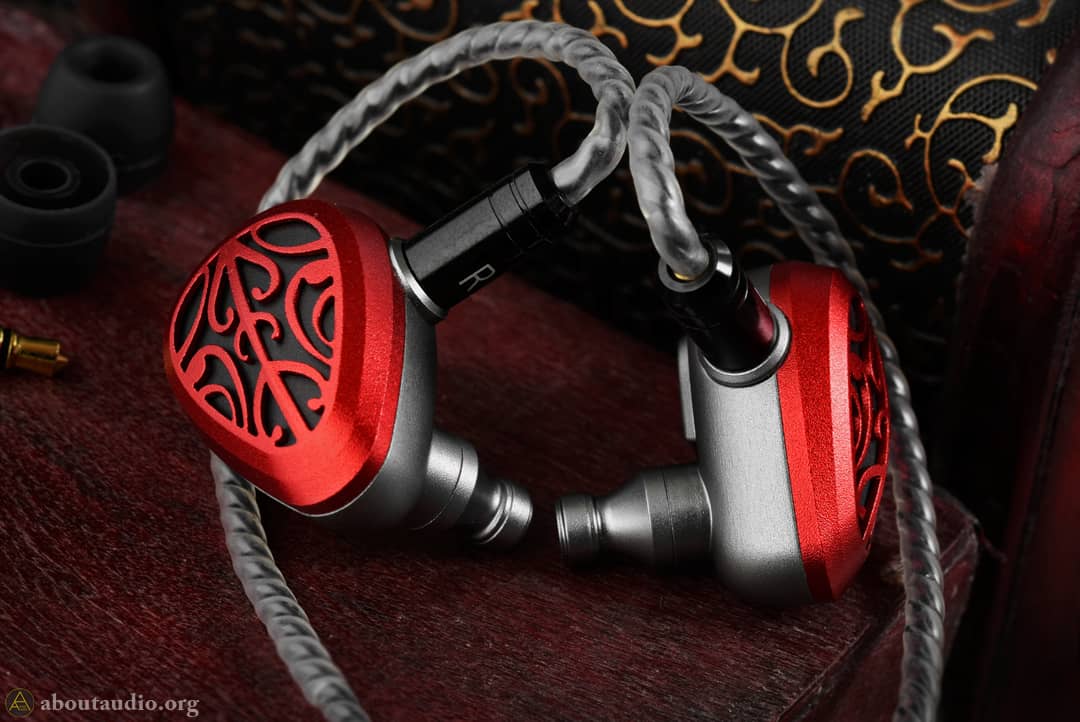 Sound impression – Highs, etc.
Sound impression – Highs, etc.
Highs show a clear and distinct tone along with the crispy bites. With a mildly lesser quantity, highs stand in the same position (or only half of a step behind) as mids. However, their presence within the music is just as strong as lows or mids. The treble strikes are refreshing, airy, and super clean. It has a cooling tone to it which serves as a refresher to compensate for the warmness from the low-mids. These appropriately contrasted temperatures serve Gae Bolg to bring out a wider color spectrum from the music, as well as making the music sound more drastic. The texture, as I have been mentioning all along with this review, busts out the most here in the trebles. It is high in density, even finer in texture particles, and presents nothing but cleanliness. It is a manifest type of treble that does not allow any dull, ambiguous environment to be formed.
These trebles are accurate and backed up with power. Paying attention to these clear treble notes brings pleasure to me on their own. Also, while I have mentioned these trebles to have a manifest attitude, that does not mean they exclude the natural treble reverbs. Removing them would degrade the liveliness, so the reverbs are surely preserved with good clarity. The treble tone is much neutral, yet its unique texture exposure and fineness makes them sound addictive to a wonder. Gae Bolg has a treble that is very much fatigue-free which is also capable of showing blatantly clear resolution. For Gae Bolg, highs are not decorative elements that are simply there to serve the lower-ends – but to perform strongly on their own to create an equal amount of charms. As mentioned a bit from the lows, the sound stage and headroom are large, full, and grand. What is special about Gae Bolg’s headroom is not just about the size. It is because this largeness is executed in a very gentle way that never exaggerates the music. The separation is also on-point, showing great accuracy while staying harmonious.
 Comparisons – Against Campfire Audio Andromeda 2020 (5BA)
Comparisons – Against Campfire Audio Andromeda 2020 (5BA)
This is an interesting comparison since both Gae Bolg and Andromeda 2020 use 5 Balanced Armatures as well as built-in waveguides for creating an accurate, harmonious sound. While they are similar in terms of sound signature since both draw a w-shaped sound, though they are in fact quite different as we dig into the details. First off, the overall sound is more closely presented on the Andromeda. Such “closeness” of the sound could be altered depending on different eartips, though under the circumstance of using the same eartip, Andromeda 2020 is noticeably more up-close and personal.
Though when it comes to the headroom size, Gae Bolg definitely takes the lead. Plus, Gae Bolg is also capable of approaching close to the ears – it is just that it forms a longer and deeper width. Unless you are a user that specifically prefers a moderately-sized headroom that focuses more on presenting a close, exquisite sound, Gae Bolg surely takes the lead in headroom as it is more grand and fuller. The Andromeda 2020 may be coming relatively short in headroom, it has its own unique charm which is the beautifully articulated upper ends. These upper ends that Campfire Audio has crafted were the major reason why Andromeda was so popular, which are now even better in Andromeda 2020.
Another key difference is the bass. Andromeda 2020 also brings out more of a typical (which is not inherently had) BA characteristic where the bass is solid as a rock. The bass reverbs are only mildly lesser and feels to have a faster speed, hence the faster strike and decay. Gae Bolg takes a more organic and neutral approach in the bass texture, still showing thorough agileness but smoother and creamier than Andromeda 2020. Lastly, and which is the most noticeable difference, the background. Andromeda 2020 has a brighter background that has a cheerful nature whereas Gae Bolg has a darker background, showing a dim and quiet nature. Because of this, Andromeda 2020 matches better for lively or exciting tracks while Gae Bolg shows superiority in tracks that benefit elegance, calmness, or seriousness.
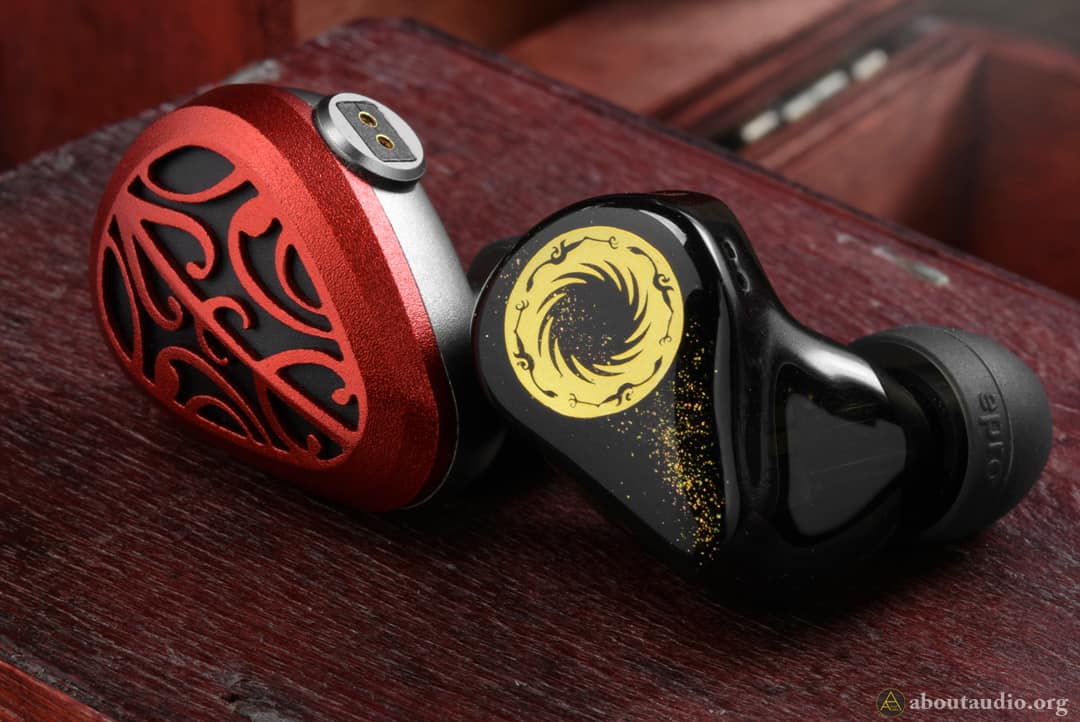 Comparisons – Against Moondrop Solis (2EST+4BA)
Comparisons – Against Moondrop Solis (2EST+4BA)
While I was not expecting to be so, these two are interestingly similar. But of course, they still have distinguishable differences. The basis of their sound signatures is heading in the same direction – to be highly musical and balanced at the same time, showing a bold w-shaped sound. Also, the difference in their physical sizes impacts their style of presenting the sound stage. Although not by a huge margin, Gae Bolg fills the music a bit wider (sideways) while Solis does a bit better job pulling out the vertical largeness (or the ups and downs). Alongside, Solis tends to present the music in a mildly more compact headroom with further thickened density. Gae Bolg, on the other hand, places wider spacing between the sounds, letting the “emptiness” to play its role in the music.
To talk about textures, Gae Bolg brings out refined textures with much smoothness. Although Solis’ texture reaches nearly as refined as Gae Bolg’s, the texture from Solis feels to have this thin, sleek layer of coating on top of the sound. This allows the texture to feel just as smooth (or even smoother) while revealing texture details as good as Gae Bolg. Overall, both IEMs show an equal level of performance of charms which all comes down to personal preferences. After the comparison between these two, I am impressed by both sides – Gae Bolg for its treble performance that matches up high as Solis, and Solis for its headroom that stretches nearly as large as Gae Bolg’s.
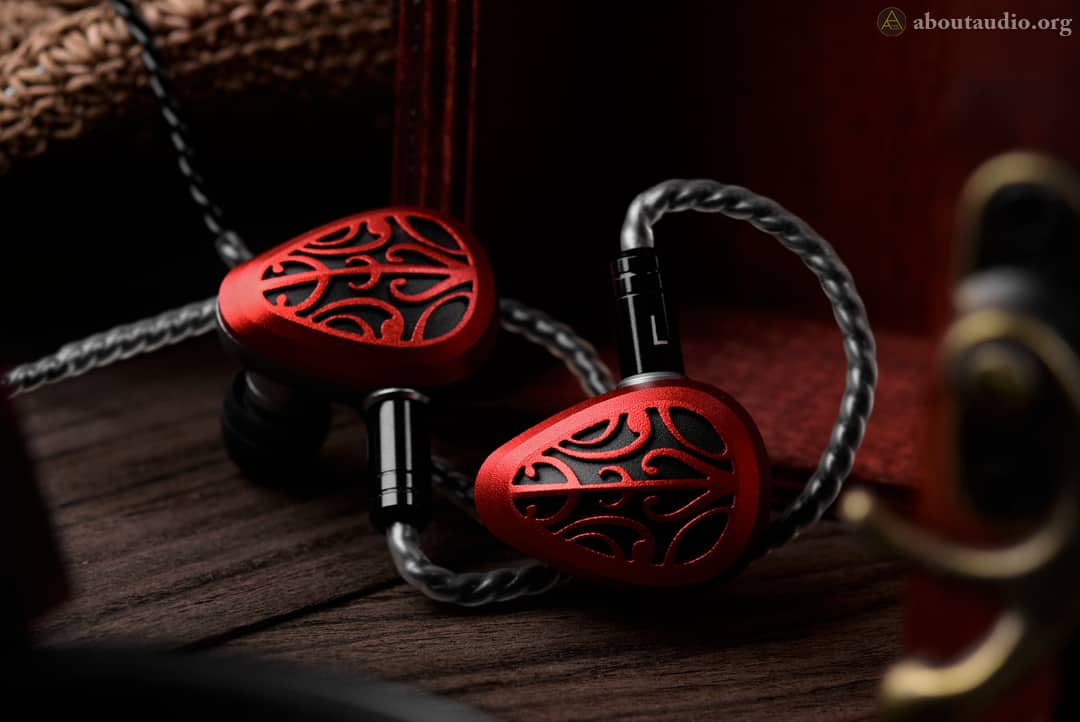 Verdicts
Verdicts
Gae Bolg is an easier gateway for users to experience the captivating sound that MMR products provide. The aesthetics first catch your eyes as you encounter it, then the sound catches your attention. The price tag may have gone through a diet, Gae Bolg still follows the exact same “MMR DNA” that was apparent from its big brothers; Homunculus and Thummim. If you ask the specifics of what that MMR DNA consists of, I would point out elegance and fineness. Despite my quick encounter with the upper two models, these two elements were strongly apparent from their sound, which I was once again able to hear through Gae Bolg. Most importantly, at a lower price. For those looking for a virtuous-sounding flagship IEM, or those who were impressed by MMR but was facing a higher price barrier, Gae Bolg would likely be a guaranteed performer that is more than good to pull the trigger.
Thanks to Metal Magic Research for providing Gae Bolg in exchange for an honest impression/feedback.
I am not affiliated with Metal Magic Research and none of my words were modded or asked to be changed.


